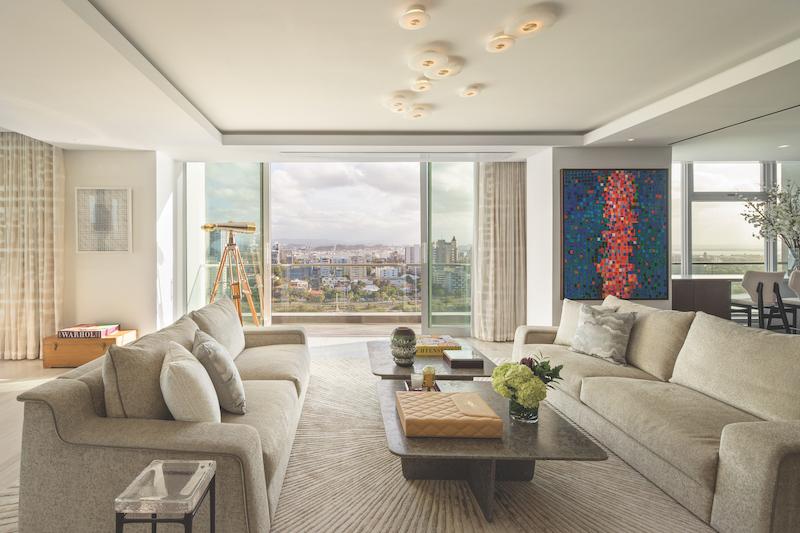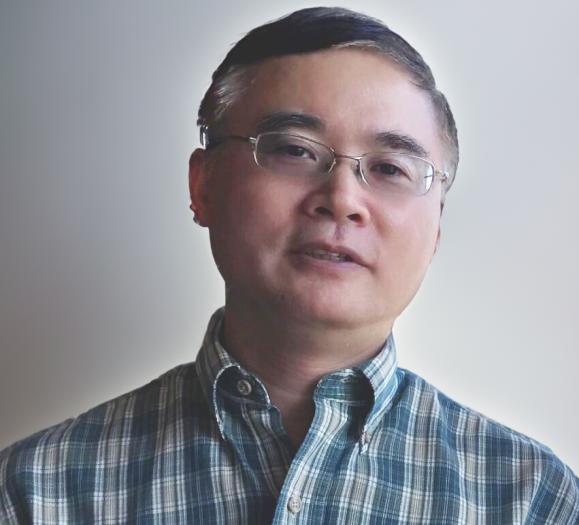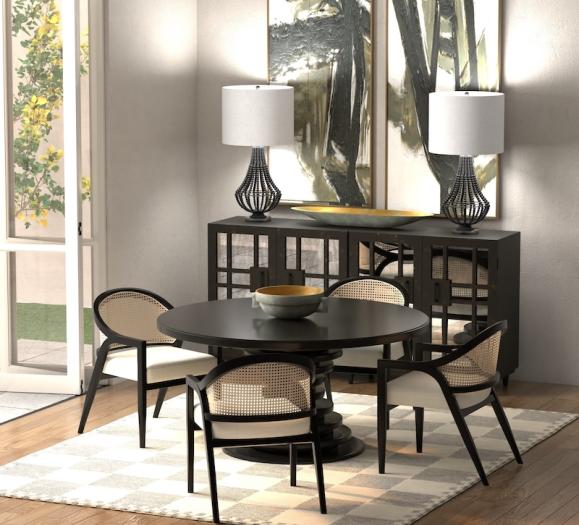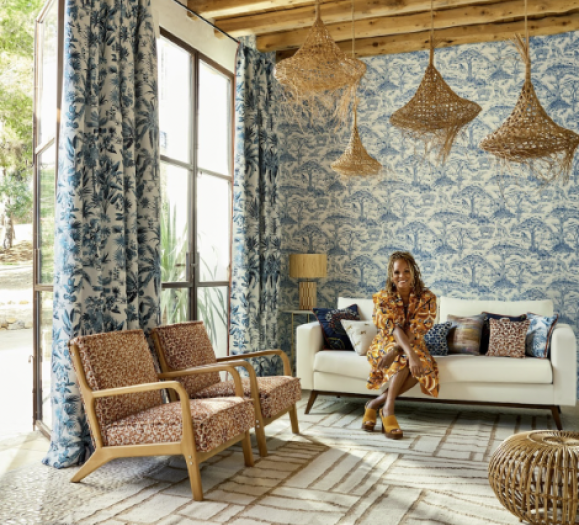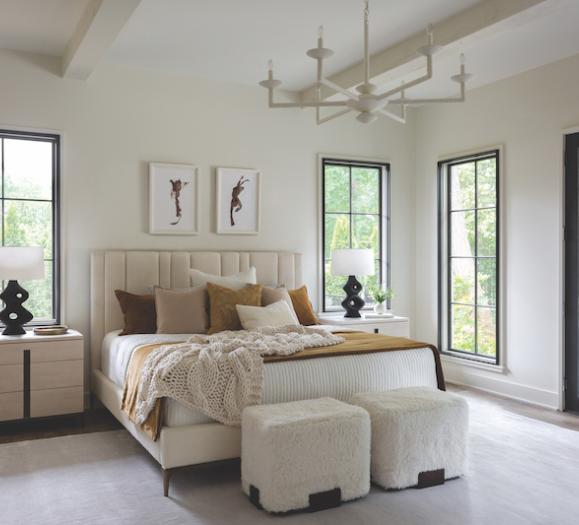"Luxury is a state of mind,” says Fernando Rodriguez, Founder & Creative Director of Fernando Rodriguez Studio. For centuries, the meaning of luxury has been associated with financial achievements. For others, luxury has a completely different meaning — allegorical to lifestyle, quality of life and comfort, he says. From an interior designer’s perspective, the objective is to create spaces that are a representation of the client’s vision, energy, direction and the lives they lead within a space.
Luxury is a subjective realm, according to Rodriguez.
“Luxury for clients is so personal,” he says. “It can manifest in several ways. For some, it’s the investment in great bedding; for others, it’s a piece of art they have always wanted, or a sofa that has the highest quality and comfort, a made-to-measure silk area rug or curated art from the best galleries in London and New York.”
Clients often want the most lavish master closets that accommodate exquisite shoes and handbag collections. But nowadays the narrative is evolving, and luxury has a new meaning that is prevalent after the challenges faced during the pandemic, he says.
“Luxonality”
Nowadays, clients are shifting the definition of luxury to a happier, healthier and comfortable way of living. In 2023, we’ve finally learned the importance of finding refuge and sanctuary within the home, with the ability to effectively recharge.
“For me, true luxury offers a fine balance between high-quality materials and the personal satisfaction of selecting key pieces that you always wanted and are non-negotiable,” Rodriguez says. “Coming home to escape the elements, recharging your mind by taking a long nap on a comfortable sofa, recharging your soul by listening to your favorite artist through a new sound system — it’s not about the price of the item, but what the item represents to you.”
In this quest for sanctuary, luxury clients often gravitate toward items that seamlessly blend comfort, quality and prestige. The realm of luxury stretches across the fabric of price points, displayed through the details of high-end furnishings and opulent materials.
Sandra Funk, CEO and Creative Director of House of Funk, likened luxury design to building a wardrobe, where timeless classics form the foundation. “I’ve always loved the French outlook on building a wardrobe,” she says. “Fewer pieces, the best quality you can afford in classic cuts and colors, then you build from that. I think the same way about building the furnishings in a home.”
While the “call” for luxury is undeniable, Funk is adamant that it does not clash with another imperative element — functionality. In fact, she asserts that luxury and functionality can harmoniously coexist.
“Luxury and functionality are never at odds,” she says. “I don’t see them as an either-or at all.”
Learning Luxe
This relationship between luxury and functionality often serves as a cornerstone in designer philosophy, especially following the pandemic. For Rodriguez, every project strikes a balance between practicality, functionality and items priced at the high end. Educating clients also becomes pivotal as they’re faced with selecting luxury furniture and decor.
“Our DNA as a design studio is to always mix price points,” he says. “We really try to create a balance through educating the client on the reason why they should invest in some pieces versus others. It is important to mix and match based on taste and how you put it all together.”
A high-end sofa, for instance, can be paired with more affordable side tables, creating an arrangement that is
still cohesive.
“Some items easily elevate the space,” he says. “The quality of the main piece will usually bring the eye to what’s luxurious, and the rest creates the perfect combination.”
The usage equation, calculated through factors like fabric quality and expected wear, also becomes a part of the decision making process.
“If this is a high-traffic piece of furniture, we need to guide our clients toward a piece with strong fabrics with a higher rub count,” he says. “We are not designing a home frequently and usually keep furniture for a good amount of years. The quality dictates how quickly based on use the item
needs to be replaced, so I take the price of the item, divided by the times they use the piece. This way the client, based on use, realizes the investment is worth the ticket price.”
Funk agrees — when it comes to clients selecting luxury furniture and decor, longevity, craftsmanship and quality reign top priority.
“When we are sourcing luxury, we are looking for staying power; this is not a throwaway culture,” she says. “This is creating heirlooms that will be used and loved and passed down for generations.”
For Funk, the process of weaving luxury into the fabric of a client’s lifestyle is also rooted in conversations that reveal their preferences and routines.
“We do an intense intake process to ensure that we are understanding our clients’ tastes completely, as well as discuss the level of luxury the client desires,” she says. “Once we set that scope and budget, it’s on us to stay inside that container.”
Rodriguez underscores the power of knowledge in guiding these decisions.
“Based on experience, the more you educate the client, the easier it gets for them to make a decision,” he says. The longevity and durability of an item often shape the investment mindset.
Trending Now
As the design landscape evolves, new trends surface that redefine luxury in both primary and secondary residences. Certain elements have recently emerged as coveted choices among both Rodriguez and Funk’s clientele. Handmade tiles, solid brass door handles and a preference for natural materials including real wood floors, raffia wallpaper and fabrics such as wool, linen and silk have taken center stage.
“Often, simple, natural materials are the greatest luxury of all,” Funk says.
The desire for family-friendly finishes also stands out, seamlessly blending practicality with style. “Gone are the days of the fancy room that no one is allowed to use,” Funk says. “There’s been a shift toward spaces that embrace natural materials and a fusion of warm, contemporary aesthetics with echoes of ancient allure. Always, spaces that resonate with soul, grit
and emotion.”
The pandemic’s ripple effect has also heightened the importance of comfort. "Since the pandemic, we spend so much time at home and people are still working remotely,” Rodriguez says. “This shift has brought to the forefront the significance of quality furniture and well-designed kitchens that effortlessly blend aesthetics and utility.”
The newfound emphasis on art is another intriguing facet.
“We are experiencing a higher enthusiasm to learn about art and finding pieces that are more of an investment than just decorating a wall,” he says. The trends extend to bespoke, custom pieces as well. From a captivating wet bar to a tailored headboard, clients are increasingly investing in personalized creations that exude luxury while reflecting their distinctive tastes.”



